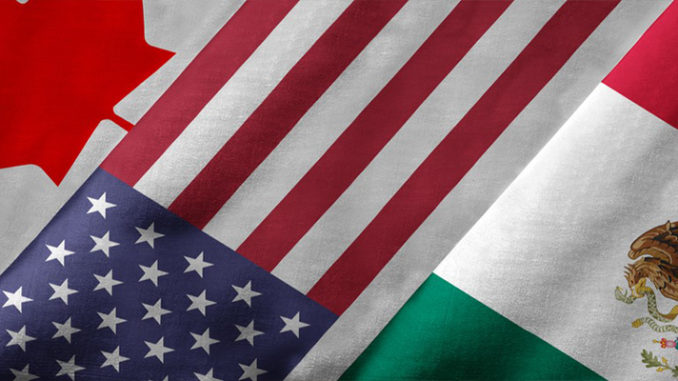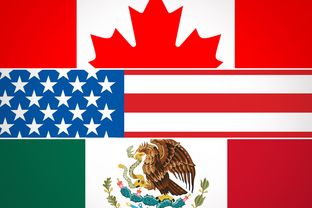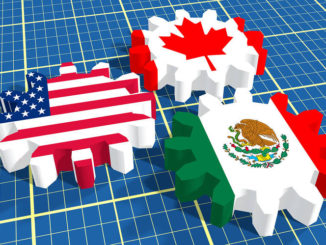
by Antonio Garza
On September 10, Mexican and U.S. officials sit down in Washington D.C. to discuss migration to review the latest migration numbers. It’ll be the first official meeting since the Trump administration threatened tariffs if Mexico didn’t take sufficient steps to reduce migration through its territory. Now, the big question is if Mexico’s efforts were successful, with the outcome likely determining the tone of bilateral relations over the next critical months. However, the negotiations have already set an unsettling precedent. Unlike in previous administrations, where each U.S.-Mexico bilateral issue was addressed separately, migratory objectives are now being pursued with economic carrots and sticks.
The current migration back and forth began this past May, when apprehensions at the U.S.-Mexico border reached their highest levels in more than a decade. During that month, more than 130,000 individuals from Central America and around the world, arrived at the border, many of whom were families seeking asylum. As the apprehension numbers broke records and overwhelmed U.S. officials, the Trump administration focused its attention on Mexico, demanding that the country step up its enforcement efforts or face tariffs in response. The following rounds of bilateral meetings ended in an agreement, where Mexico promised to increase its migration efforts with a 90 day deadline for review.
Now, the upcoming meetings in Washington mark the deadline’s completion, and there will be quite a bit to discuss. Since May, Mexican authorities have increased migratory operations and apprehensions, including deploying members of the newly created National Guard. The number of deportations also increased to almost 20,000 in June, the highest levels in more than a decade. While in the past few weeks, Asian and African migrants have also been denied travel documents in Southern Mexico, essentially blocking them from traveling north. These enforcement policies come with their own consequences, such as pushing more people toward smugglers or leaving asylum seekers without sufficient protections. Yet, they have moved the needle on the United States’ migration objectives in the direction sought by the Trump administration.
Despite these advances, it’s possible that Mexico’s efforts will not be deemed sufficient. Since this past May, the Trump administration has continued to pursue a wide range of strategies to reduce migration. The Department of Homeland Security has sought third safe country agreements with countries around the hemisphere, and the Migrant Protection Protocols, which sends people back to Mexico during their asylum claim, has been expanded to more than 35,000 asylum seekers. Despite Mexico’s Foreign Minister and the Mexican Congress recently drawing a red line when it comes to a safe third country agreement, it seems inevitable that U.S. officials will continue to push Mexico to stop people transiting through the country.
This is where the precedent of using economic sticks in migration policy becomes concerning. Apprehending people who are seeking to evade detection and ensuring that asylum seekers receive legally mandated protections is a complicated task, and one that even the United States struggles to fully achieve. Wielding or applying tariffs or threatening the delicate balance surrounding the U.S.-Mexico-Canada trade agreement’s movement through Congress as a consequence to Mexico’s migration enforcement efforts or as leverage in forcing their hand in a bilateral third safe country agreement won’t make these migratory challenges any easier. Instead, it only opens up additional economic pain for Mexican and U.S. businesses and consumers and threatens the United States’ largest trading relationship.
Undoubtedly, there is a need for bilateral and regional cooperation on migration. The movement of people out of Central America and globally is a shared challenge and one where the United States, Mexico, and countries throughout the region could do more together than alone. The United States also has a long history of working with Mexico on migration issues, including most recently in 2014 with Mexico’s Southern Border Plan. There is a historic precedent and space for continued collaboration, not just for enforcement but in creating a regional protection system.
However, the United States’ should pursue these beneficial relations through cooperation, not coercion. This begins with addressing our own immigration and asylum systems, supporting Mexico in developing and expanding its own, and supporting efforts to keep people from ever leaving their countries. We shouldn’t turn to economic policy levers to treat migration problems, and we do so at our own economic risk.
Antonio Garza served as the U.S. ambassador to Mexico from 2002–2009. Mr. Garza is now counsel to the law firm of White & Case in Mexico City. For more tonygarza.com



